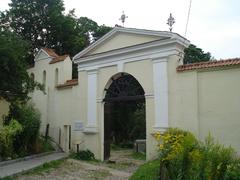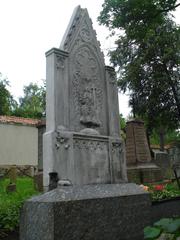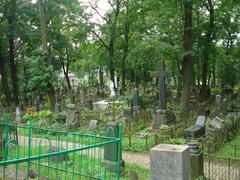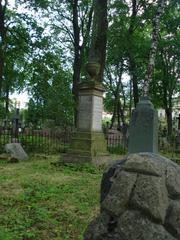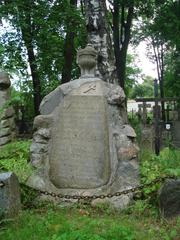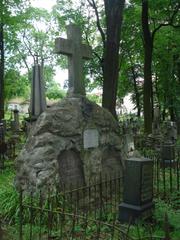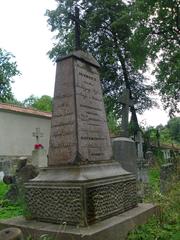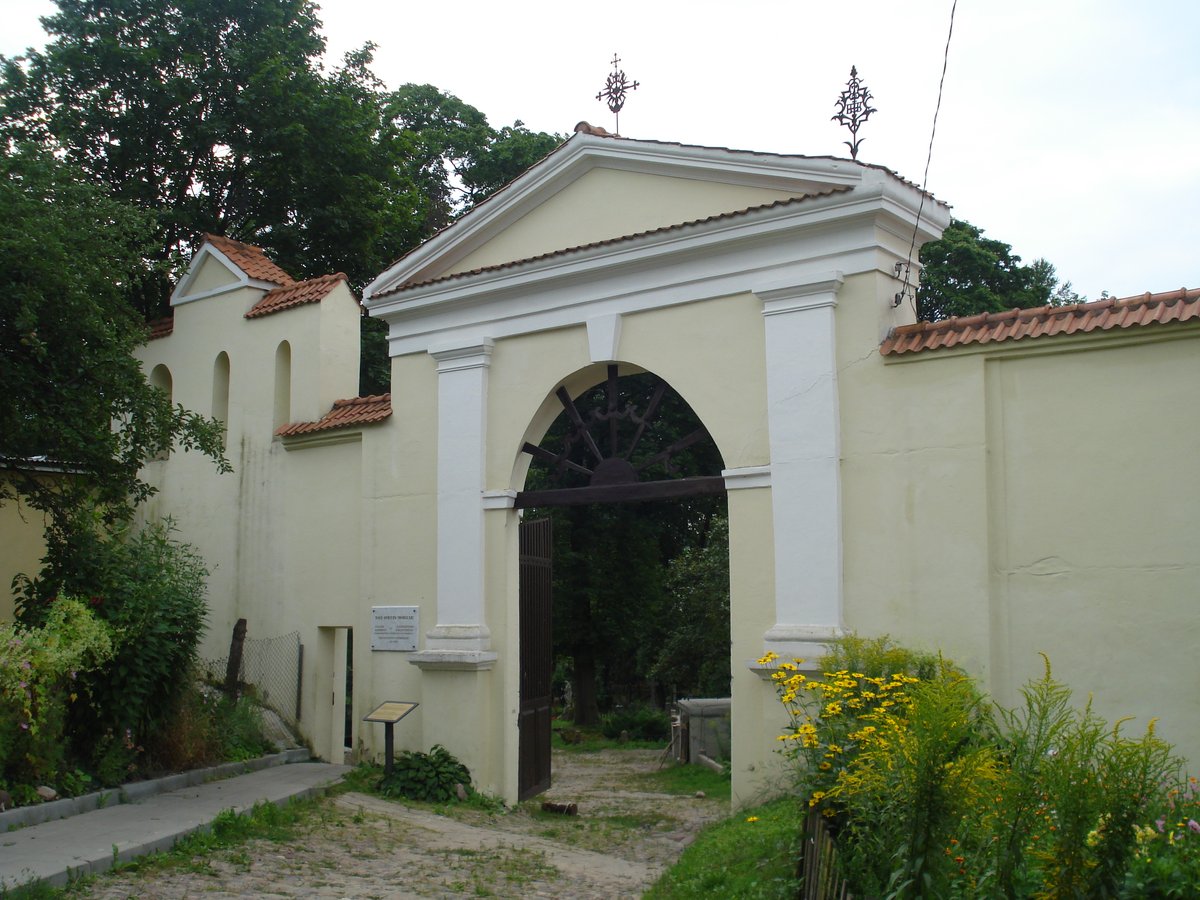
Bernardine Cemetery Vilnius: Visiting Hours, Tickets, and Historical Sites Guide
Date: 14/06/2025
Introduction
Bernardine Cemetery (Bernardinų kapinės), located in the heart of Vilnius near the artistic Užupis district, is among the city’s oldest and most culturally significant landmarks. Established in 1810 by the Bernardine monks, the cemetery is a living testament to Vilnius’s complex social, religious, and artistic history. Its grounds are not only the final resting place for poets, artists, and intellectuals, but also serve as an open-air museum of funerary art and a peaceful oasis for visitors seeking reflection or inspiration (Vilnius Tourism; govilnius.lt).
This comprehensive guide covers Bernardine Cemetery’s history, architectural features, practical visiting information—including hours, entry details, and accessibility—nearby attractions, and tips for an enriching experience. Whether you are a history enthusiast or simply in search of tranquility, Bernardine Cemetery promises a memorable encounter with Vilnius’s layered heritage (My Wanderlust; LRT.lt).
Table of Contents
- Origins and Establishment
- Architectural and Artistic Features
- Social and Multicultural Significance
- Impact of Political Changes and Restoration
- Visiting Bernardine Cemetery: Practical Information
- Visitor Tips, Safety, and Etiquette
- Frequently Asked Questions (FAQ)
- Conclusion and Recommendations
- References
Origins and Establishment (19th Century)
Bernardine Cemetery was founded in 1810 as a dedicated burial ground for the Bernardine monks and the growing Catholic population of Vilnius (Vilnius Tourism). The site, situated near the Vilnia River and Užupis district, reflected new European urban planning concepts that moved cemeteries outside city walls for public health reasons. The cemetery was carefully planned with family plots, orderly rows, and a central avenue leading to its chapel (Bernardine Cemetery History).
Architectural and Artistic Features
Layout and Monuments
Spanning nearly four hectares, Bernardine Cemetery’s gently sloped grounds are shaded by mature oaks, maples, and lindens. The informal, meandering paths and lush greenery create a tranquil, park-like atmosphere (In Your Pocket). The entrance gate and central chapel, built in the early 19th century, remain focal architectural highlights.
The cemetery is renowned for its artistic tombstones, mausoleums, and sculptures. Styles range from neoclassical and Gothic Revival to Art Nouveau and Soviet minimalism, reflecting Vilnius’s diverse history (Evendo). Many grave markers feature religious symbols, angels, and intricate carvings, while inscriptions in Lithuanian, Polish, and Latin reflect the city’s multicultural identity.
Notable Graves and Columbarium
Bernardine Cemetery is the final resting place for influential figures such as literary critic Leon Borowski, photographer Stanisław Filibert Fleury, and painter Kanuty Rusiecki (madeinvilnius.lt). The cemetery also contains Lithuania’s only ancient columbarium, a rare example of historic funerary architecture.
Social and Multicultural Significance
From its inception, Bernardine Cemetery has embodied Vilnius’s multicultural and intellectual spirit. The multilingual inscriptions and diverse memorials mirror the coexistence of Lithuanian, Polish, Jewish, and Belarusian communities in the 19th century (likealocalguide.com). The cemetery became a prestigious burial place for the city’s elite, including scientists, educators, and artists.
Annual traditions such as Vėlinės (the Lithuanian Day of the Dead) are celebrated with candlelit ceremonies, blending Christian and pagan customs and drawing visitors and families for reflection and remembrance (vilniusinlove.com).
Impact of Political Changes and Restoration
The cemetery’s history reflects the region’s political upheavals. Many graves commemorate participants in uprisings against Russian rule, and national symbols can be found throughout the site. In the 20th century, Bernardine Cemetery suffered neglect under Soviet occupation, with monuments deteriorating and the chapel falling into disrepair (LRT.lt).
Major restoration efforts since the 1990s—culminating in significant renovations completed in 2020—have helped preserve over 1,000 gravestones and restore the historic landscape (Vilnius Municipality). The cemetery is now a protected heritage site and continues to receive ongoing care.
Visiting Bernardine Cemetery: Practical Information
Visiting Hours
- Open daily: 8:00 AM to 8:00 PM (hours may vary on holidays or by season; check Vilnius Tourism for updates)
Entry and Accessibility
- Admission: Free for all visitors.
- Access: Main entrance at Žvirgždyno g. 3; easily reachable by foot from Užupis and Vilnius Old Town.
- Wheelchair Accessibility: Main pathways are generally level and accessible, though some areas may be uneven due to historic landscaping. Assistance is available upon request.
Guided Tours and Events
- Guided Tours: Offered by local operators and the Vilnius Tourism Center. Audio guides and virtual tours are available online.
- Special Events: Vėlinės (November 1st), All Saints’ Day, and other cultural commemorations feature candlelit ceremonies and increased visitation.
Nearby Attractions and Photographic Spots
- Užupis: Vilnius’s bohemian quarter, known for its street art and cafés.
- Bernardine Monastery and Church: Historic religious complex adjacent to the cemetery.
- Vilnia River Promenade and Old Town: Scenic walks and rich architectural heritage nearby.
Photo Tips: The entrance gate, central chapel, and ornate mausoleums are favored spots. Visit during early morning or late afternoon for the best light.
Visitor Tips, Safety, and Etiquette
- Dress modestly and maintain a respectful demeanor.
- Keep noise to a minimum and do not disturb graves or memorials.
- Photography is allowed, but drone use requires permission.
- Facilities: No restrooms or cafés within the cemetery; amenities available nearby in Užupis and Bernardine Gardens.
- Accessibility: While main paths are navigable, visitors with limited mobility should attend with a companion.
Frequently Asked Questions (FAQ)
Q: What are Bernardine Cemetery’s visiting hours?
A: Daily from 8:00 AM to 8:00 PM; check official sources for seasonal updates.
Q: Is there an entry fee?
A: No, admission is free.
Q: Are guided tours available?
A: Yes, through local agencies and audio guides online.
Q: Is the cemetery wheelchair accessible?
A: Main paths are accessible; some areas may be challenging.
Q: What nearby attractions can I visit?
A: Užupis, Bernardine Monastery and Church, Vilnius Old Town, and the Vilnia River promenade.
Q: When is the best time to visit?
A: Spring for blooming flowers, autumn for colorful foliage, and during cultural events for unique experiences.
Conclusion and Recommendations
Bernardine Cemetery stands as an essential cultural and historical landmark in Vilnius. Its serene landscape, artistic monuments, and deep-rooted multicultural significance offer a rewarding experience for all visitors. Free admission and convenient access make it an ideal addition to any Vilnius itinerary, especially when paired with the surrounding attractions of Užupis and Old Town.
For an enhanced visit, consider joining a guided tour or exploring the cemetery with an audio guide or the Audiala app. Respect the solemn environment, and take time to appreciate both the heritage and natural beauty of this remarkable site.
References
- Vilnius Tourism – Bernardine Cemetery
- govilnius.lt – Bernardine Cemetery
- Wikipedia – Bernardine Cemetery
- Evendo – Bernardine Cemetery
- In Your Pocket – Bernardine Cemetery
- My Wanderlust – Things to Do in Vilnius
- Tourist Secrets – Must-See Spots in Vilnius
- LRT.lt – Bernardine Cemetery Restoration
- Vilnius Municipality – Bernardine Cemetery Restored
- Vilnius In Love – Day of the Dead (Vėlinės)
- Like A Local Guide – Bernardine Cemetery
- Made In Vilnius – Significant Cemeteries
